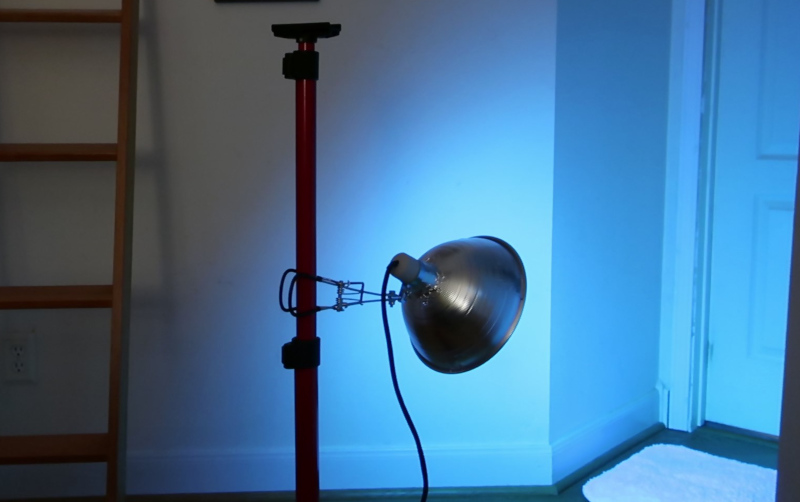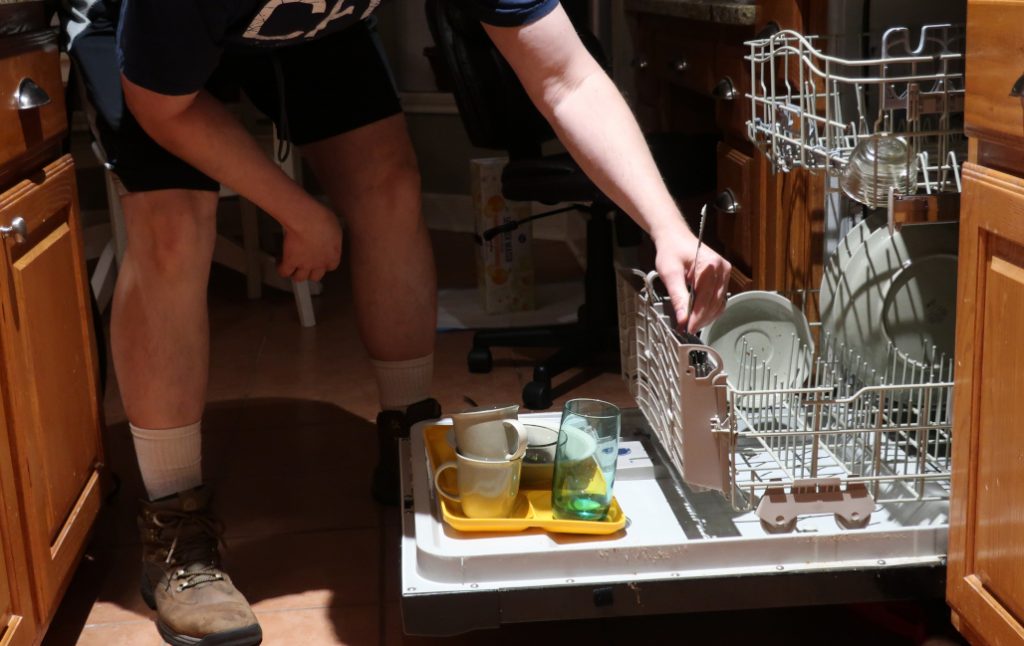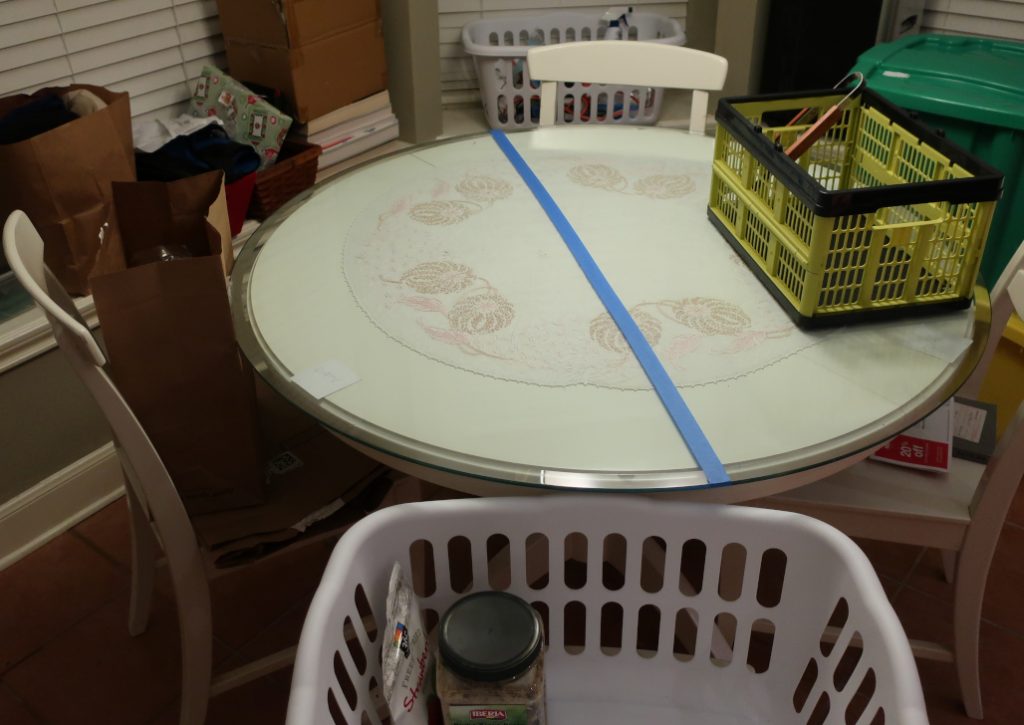How To Quarantine At Home
My wife was in class at Harvard University when the sirens went off. An Air-Force brat like me, the grinding wail of the rotary klaxon still makes her hair stand on end—still conjures visions of Cold War airmen rushing off into the night to call forth nuclear Armageddon. Usually, that’s overreaction. Usually, it’s just somebody testing the tornado alarms. Not today.
She works in health and safety, and was in Boston for a workshop with mostly government and military colleagues from around the world—places as far flung as Germany, Ireland, Jordan, and Shanghai—and the CDC. Now, with the president of the United States dismissing what was still being called “the novel coronavirus” as “no worse than the flu,” she was in Boston watching in growing horror as classmates were called home, one after another, to help their governments manage what was rapidly developing into the most serious global health crisis of modern times.
As a science writer, I’d been following developments in China since the new year. In mid January, I’d made some crude, inexpert calculations and started suggesting online that we, in America, ought to be taking this much more seriously—ought to be preparing for a possible pandemic. I’d posted my calculations with admittedly alarmist projections, but even I didn’t believe them, not really. The human brain has a hard time with large numbers and geometric growth.
On Friday, the only coronavirus cases in the US were travel related, but as my wife sat down to her first day of class, reporters were learning of a Boston cluster stemming from a biotech conference on the other side of town. By Wednesday, 70 cases in the area had been linked to the same source, and the genie was out of the petri dish. Shortly after Harvard announced it would be closing its residence halls, my wife called to say she’d be entering isolation on her return, just to be safe.
I’d said back in January that this disease had the potential to overwhelm hospitals here, just as in China, and that Americans should be prepared to shelter in place and care for our own. If things got bad, it would be vital that the whole family didn’t get sick all at once; someone would have to care for the others. and if necessary get them to a hospital. To that end, I’d already been fortifying our normal hurricane supplies and I’d even started drafting plans for in-home quarantine. Now I had only hours to put those tentative plans into effect.
Some of you, in coming weeks, will face the up close and personal medical crisis I’d been preparing for, and while my wife has since emerged from her isolation unscathed (one of her classmates didn’t) , I hope my experience will serve as a trial run we all may benefit from.
Family pandemic response is all about controlling the movement of invisible pathogens into the house and between family members. What this takes and how effective it can be depends on the plague, so the first line of defense is information. By the time COVID-19 cases started appearing in America, we already know the disease is spread at least mostly by respired droplets—so, coughing, sneezing, talking, and touching exposed surfaces and then the eyes, nose, or mouth.
That meant we didn’t need to dress like extras from the Andromeda Strain to get through this, just use good sense and good hygiene—and stay home as much and as long as possible. To do this, however, would take preparation.
Materially, we were set. We are very far from being preppers, but we are both from military families, both one generation from the farm, and living in hurricane country. We already had supplies enough for a couple of weeks, I just needed to stock up the pantry and secure enough medicine to get four people through a bad flu with mild pneumonia—anything worse would require hospitalization anyway.
Since January, I’d been reviewing the literature on virus inactivation with an eye toward producing a science video on the relative merits of soap, alcohol, UV light, steam, etc.. To that end, I’d ordered a UVC light for use in the video (and for use in bleaching some plastic tub fitting that head yellowed with age). Now I reviewed the science literature to estimate the exposure times it would require to destroy virus at varying distances—if it arrived in time. I had also already acquired a couple of gallons each of bleach, disinfectant, and liquid soap, a few cartons of disinfectant wipes., and a box of individually wrapped alcohol wipes—handy for use on buses, airplanes, and shopping carts.
Then came the question of masks, which might be needed in order to continue safely commuting to school and work during an outbreak. The US government was telling citizens not to wear masks, in stark contradiction not only of common sense, but the advice given by pretty much all medical experts throughout the rest of the world. So I reviewed the science and found the US experts were flatly, inexplicably, wrong. The actual published, peer-reviewed science is clear that N95 masks are highly protective against respiratory infections, that surgical masks are nearly as good, and that improvised or DIY masks, while far less effective, are significantly better than nothing.
Science and common sense also agreed on another point—how much virus you are exposed to matters. Reducing your initial exposure to a virus lowers your risk both of catching it, and of developing the most serious case if you do become ill.
Very well. The government “experts” are wrong. What else is new?
Several years back, I’d bought a box of surgical masks to protect the inlaws from my cold during a Christmastime visit. Back in January, I’d already distributed the last three to the girls (just in case classmates started showing up sick) and to my wife (in case she needed it during her upcoming trip). I’ve kept an N95 mask in my office desk at work since the SARS outbreak, and I bought brand new P95 painter’s mask over the Christmas break to replace and old one for which cartridges are no longer available.
So with hygiene, food, and medicine covered, I turned to planning procedures.
We would have to assume both that Kristina had already been infected in Boston, and that she hadn’t, but had been contaminated while in transit on the flight home. She’d be wearing her surgical mask, but we needed to prevent infecting her from her own belongings and at the same time contaminating the house. I already knew where she’d be isolating.
Our house is shaped rather like Idaho, with the master suite the northern hill country. That was the obvious sick ward—a closed, self contained space with its own bathroom and adequate space for one healthy person to work or three sick people to recuperate.
Our office (down by Boise) is short on space, so my bedroom would be in our “music room” (Twin Falls) in the space between the front entry and the dining table. That would put me at the opposite end of the house from Kristina, and in case the infection could travel by air as some feared, outside the path of air returning from her bed to the central AC and its expensive new HEPA filter. I just had to get her safely inside.
I laid the small tarpaulin I keep for spray paint projects on the kitchen floor, then when she drove up, got the dogs and girls behind closed doors so she could enter and unpack while I waited in the office. Still wearing her mask, she sat her bags on the tarp, put all her clothes in the washer, stripped and changed into a bathrobe I’d hung in the laundry room for her. Then she retreated to the master suite, where she would remain, excepting walks and occasional masked forays, for the next fourteen days.
I donned my painter’s mask, latex gloves from a hair dye kit, UV protective goggles, and boots and bluejeans to protect my legs from the UV light. Using disinfectant wipes, alcohol wipes, and the UV lamp (which had arrived just in time), I sterilized judiciously—focusing on items she’s need to handle, and that she might have had out in class or on the plane—her cell phone and laptop in particular.
Everything that got cleaned went in one paper grocery sack. Everything else (things she was unlikely to need in the next few days) went in another. The sacks were rolled down—any remaining contamination now contained inside where is would degrade over time—and the empty suitcase got a thorough UV sterilization. After delivering the bags and suitcase to the master bedroom, I put a bathroom carpet mat outside the door to help catch any virus particles swept under it by the air conditioning.
The tarp, I bunched up (clean side out) and stowed in the garage where no one would touch it for days. Then I removed and cleaned my mask, wrapped my potentially contaminated clothes in a beach towel bound for the laundry, and showered—making su re to start by soaping my face—thereby inactivating any viral contaminants.
re to start by soaping my face—thereby inactivating any viral contaminants.
And so it began. That first night, I clamped the UV light to a stand and let it shine on the area outside the bedroom door for half an hour to inactivate any recently shed virus particles so they wouldn’t blow around during the night.
By now schools and workplaces were entering the Alice in Wonderland world of impromptu pandemic response—but that just meant we could focus on our quarantine.
We have a bad habit in our family of wasting paper towels to dry our hands. That wouldn’t do if we might be hold up through a pandemic, unable to just run to the store. I found three clean kitchen towels, hung one up and put the other two in rotation. Then I moved the paper towels to the other end of the counter to make them harder to reach for out of habit and put a bottle of lotion next to the hand towel to remind everyone to moisturize after washing—because dry hand can become avenues for infection.
During a pandemic, you need a way to safely get goods into the house, and if your hands can pick up the infection from shopping carts, they can pick it up from the shopping. I cleaned the kitchen table and put a line of painter’s tape down the middle to divide it into “sterile and non-sterile” zones to be used in sanitizing anything entering the house during the coming isolation (which by now was obviously going to extent far beyond Kristina’s two-week quarantine).
I delivered meals to an art niche outside the bedroom and talked to my wife though the closed door, over the phone, or at a distance as she wore her mask. I always washed my hands after approaching the bedroom or handling her dishes, changed the kitchen towels every day, and kept the counters barren and clean.
kept the counters barren and clean.
At least one meal each day, I delivered on a plastic tray, and at least once a day, she returned her dishes on that tray—but only by prior coordination. When I was ready to start the dishwasher, I’d fill the soap dispenser, open the door, and pull both the drawers half way out. Then after checking to make sure I had a place in the washer for every potentially contaminated dish, I’d carry over the tray (bare handed) and set it on the open dishwasher door while I loaded, then put the tray inside too before washing my hands and closing and starting the washer.
At the end of the first week, my wife was notified by Harvard that one of he classmates had tested positive for the virus, but there was nothing we could do about that.
About every other day, we took a walk around the lakes in our neighbourhood. I’d leave the dogs with one of the girls, open the back door, then stand across the room while Kristina existed. Then I’d shut the back door, exit through the front door, and walk on the opposite side of the street from her.
When deliveries arrive at our door, I carry them around to the back using one hand so I can enter and wash my hands with the other. Then I use scissors, tongs, a box cutter, and/or my bare hands and repeated handwashing to extract the contents. Some items can simply be cut open, and the contents extracted with the (clean) tongs. Anything not in contact with humans since it left the factory will already be safe. Plastic wrapped frozen foods are opened in this way and dumped into a plastic bin, where they can be labelled with a permanent marker and carried to the freezer.
Other items can be easily wiped down with alcohol wipes (electronics) or disinfectant wipes (milk cartons), or can simply be washed in the sink (cans and jars). Other items are simply left on the table—waiting for long enough for any virus to degrade. A laundry basket adds capacity to this “potentially contaminated” purgatory, while a paper grocery sack serves as a virus-hostile trashcan to hold potentially contaminated wrappings. A few items that are not easily cleaned but are wanted right away, I use the UV lamp on (after chasing the family aware and taking precautions to protect my eyes and skin).
This might all seem extreme, but it hasn’t been to us. We both grew up on the same Cold War air-base, and are both of the mindset that you just “do what you have to do.” When the mission is to keep the whole family from falling ill at once—or at all—this is what you do. We have not become germophobes (that would be counterproductive), and while some of our precautions might be more than is necessary, others are unquestionably imperfect. And that’s okay. We are unquestionably at lower risk due to these measures, and that’s all we can ask for.
Some things we did right. We planned ahead, then adapted to the situation, and planned with contingencies for failure. What if the UV light didn’t arrive, or the new airbed? What if we both got sick and one of the girls had to get us to the hospital, etc. Where would everything go—from toothpaste to UV goggles, so it wouldn’t go missing and wouldn’t cause mistakes in a crisis?
Periodically each day, I checked on my wife to make sure she was feeling well, getting enough water, and keeping up her spirits up. When I vacated the bedroom, I took my Hawaiian shirts, which later lent a festive air to our otherwise insular walks. Before she returned, I laid hands on our medical thermometer—a real one, with mercury—not a battery powered ballpark guesser that likely would fail when needed most. When I delivered meals, I made finger tip “heart signs” in the style of the Korean dramas she loves, and when I could, emailed cute pictures of our dogs.
Some things we missed. It didn’t occur to me that while in quarantine, my wife would also be working from home. Our office computer—purchased for her—would be unavailable, so I had to scramble to get her a suitable chair, wrist rests for her keyboard, and a monitor.
But overall, we sailed through, and while others in close social association have fallen ill we haven’t—and knock on wood, won’t. But if one of us does, we know what to do. We’ll re-institute the “sick ward” with two additions, I’ll have to done my painter’s mask a few times a day to enter the room and render care—and the UV lamp will go into regular service.
I hope it doesn’t come to that, but if it does, we’re ready. And I hope my experience will help you be ready too. Fortune favors the prepared.
Have quarantine experiences to share? Post them below, and be on the lookout for my upcoming video on anti-viral disinfectant and sterilizing lamps.

Nice post! I like the Idaho map details : )
This “excitement” is setting a modern focus on Maslow’s hierarchy of needs for sure.
Thank you for sharing your experience. In the face of this pandemic, and especially considering the abysmal state of US healthcare, these precautions seem very sensible. My family and I are taking similar measures. Better safe than sorry, indeed.
There’s just one thing I’d like to point out, in the spirit of sharing correct information on the virus with your readers. I feel I have to clarify this because you mentioned steps taken to disinfect/isolate areas of the floor (the rug under the door, and the UV lamp pointed at the bedroom entrance), which should not be necessary. The virus can’t get up from the floor by itself and enter your nose/mouth/eyes, unless you touch the floor and then your face. By all means do keep your floor clean, but there’s no need to go the extra mile on account of the coronavirus – unless you have a baby crawling around!
Take care of yourself, and best wishes for you and yours. 🙂
That’s absolutely true. The reason we used the UV lamp was in case coming and going had scattered virus about, to prevent either the air conditioning or the pets spreading it around–and because we had it available. Realistically, it’s doubtful if would make much difference.